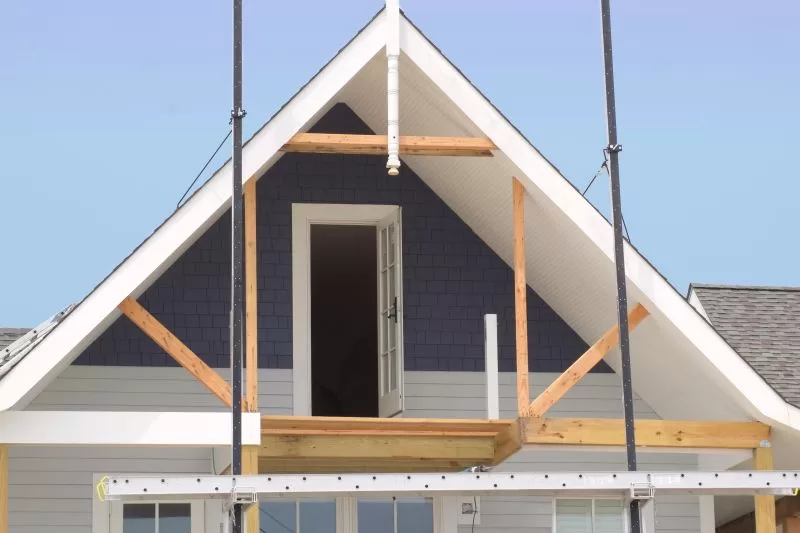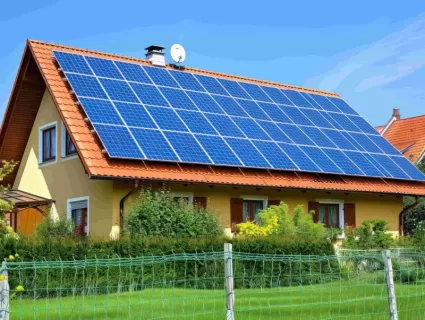A pitched roof, often referred to as a sloped roof, has been a preferred choice in residential construction for centuries. Its classic design, marked by an angle that allows water and snow to slide off easily, continues to appeal to homeowners and builders alike. This type of roof not only enhances the aesthetic of a house but also offers practical advantages. For anyone considering a new build or renovation, understanding the benefits of a pitched roof can help in making an informed decision.
Improved Water Drainage
One of the primary benefits of a pitched roof is its natural ability to handle water drainage. In areas where rain and snow are common, this can be a significant advantage. The slope allows water to run off quickly, so it reduces the chances of leaks or water pooling on the roof. This is particularly beneficial for preventing long-term water damage that can lead to costly repairs. Roofing experts like Cascade Roofing often emphasize the importance of choosing a roof that efficiently handles water drainage to avoid future issues.
A flat roof, on the other hand, often requires more complex drainage systems, such as gutters or internal drains, to avoid standing water. With a pitched roof, gravity does the work. In regions that experience heavy rainfall, the faster water runoff from a sloped roof means less pressure on the building’s foundation and walls. This reduces the likelihood of water-related issues both inside and outside the home.
Enhanced Durability
Durability is another key reason why pitched roofs are popular in residential construction. The sloped design helps to withstand harsh weather conditions like strong winds, snowstorms, and heavy rains. Because the roof is angled, wind can pass over it more easily, reducing the stress on the structure compared to a flat roof, which can act like a sail in windy conditions.
Additionally, the design of a pitched roof often includes the use of stronger materials, such as tiles or shingles, which are more resistant to the elements. These materials, combined with the roof’s sloped shape, help to extend the life of the roof. Homeowners can expect fewer repairs and replacements over the years, making it a cost-effective choice in the long run.
Energy Efficiency
A pitched roof can also improve the energy efficiency of a home. The design allows for better insulation, as the space beneath the roof can be used to add layers of insulation that help to regulate the temperature inside the house. In hot weather, the steep slope allows heat to escape more easily, preventing the home from becoming overly warm. During colder months, the extra insulation helps to keep heat in, reducing the need for excessive heating.
Homes with flat roofs may struggle with insulation issues, often requiring additional energy to maintain a comfortable indoor temperature. By choosing a pitched roof, homeowners can lower their energy bills while also reducing their carbon footprint.
Increased Storage Space
Another advantage of a pitched roof is the extra space it creates within the home. The area under the roof, often called the attic or loft, can be used for storage or even converted into additional living space. This can be a great solution for families needing extra room without the expense of a home extension.
In contrast, flat roofs do not offer the same flexibility for storage or living space. The additional height provided by a pitched roof opens up opportunities for home expansion that can increase the overall value of the property.
Better Aesthetic Appeal
Pitched roofs are known for their aesthetic appeal. They can give a home a classic, timeless look, making the house stand out in the neighborhood. Different roofing materials, such as clay tiles, slate, or metal shingles, can be used to enhance the visual impact, creating a unique and personalized appearance.
The visual appeal of a pitched roof also adds to the property’s curb appeal, which can be beneficial if the homeowner decides to sell. A home with a well-maintained pitched roof often attracts more buyers due to its attractive exterior and the long-term benefits associated with it.
Supports Solar Panel Installation
As more homeowners consider environmentally friendly options, the installation of solar panels has become increasingly popular. Pitched roofs provide an ideal surface for solar panel installation because the angle of the roof helps capture more sunlight throughout the day. The steeper the pitch, the better the exposure to the sun’s rays, which means the solar panels can generate more energy.
On a flat roof, additional structures are often required to angle the panels toward the sun, which can add to installation costs. A pitched roof simplifies the process and ensures that solar energy systems operate more efficiently.
Low Maintenance
One often overlooked benefit of pitched roofs is their low maintenance needs. Due to the natural slope, debris such as leaves, twigs, and dirt slide off more easily. This reduces the need for frequent cleaning, which is often required with flat roofs to prevent blockages in the drainage system.
Moreover, pitched roofs tend to experience fewer issues with mold, mildew, and moss growth because water doesn’t pool as it would on a flat surface. Regular inspections and occasional repairs are still necessary, but the upkeep is generally less demanding compared to flat roofs.
Longer Lifespan
With their ability to withstand harsh weather conditions, resist water pooling, and allow for better ventilation, pitched roofs often have a longer lifespan than flat roofs. Materials like slate, clay, and metal used in pitched roofs can last up to 50 years or more with proper maintenance. This longevity adds to the overall value of the investment, as homeowners will need to replace their roofs far less frequently.
Flexibility in Design
Pitched roofs offer more flexibility when it comes to architectural design. They can be customized in various styles and angles, making them adaptable to different types of homes, from traditional to modern designs. Whether opting for a steep gable roof or a softer hip roof, homeowners can choose a design that complements their personal taste and the architectural style of their home.
This flexibility is particularly appealing to homeowners who want to add unique elements to their home’s exterior, such as dormer windows or skylights. These features are easier to incorporate into a pitched roof, offering a blend of functionality and aesthetic appeal.
Conclusion
Choosing a pitched roof for residential construction comes with many benefits. From improved water drainage and increased durability to enhanced energy efficiency and extra storage space, pitched roofs provide both practical and aesthetic advantages. They also support modern innovations like solar panels and require less maintenance than flat roofs. For homeowners looking to make a long-term investment in their property, a pitched roof offers excellent value and performance, making it a wise choice in various climates and architectural styles.


